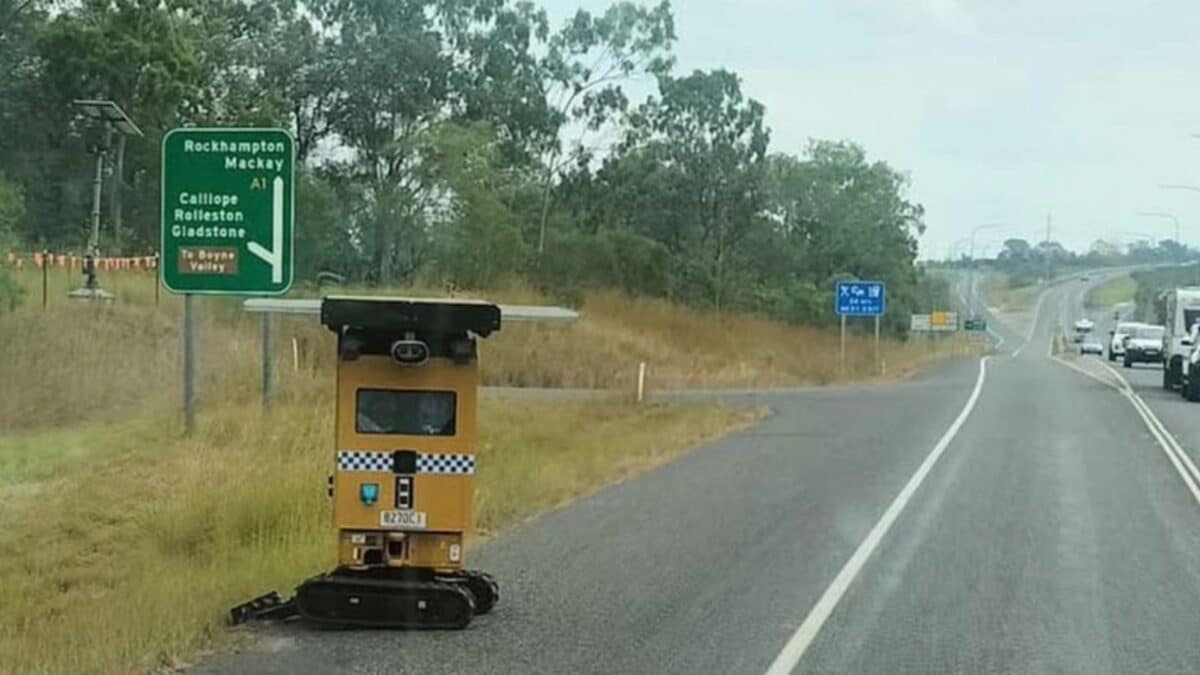Remote-controlled speed cameras in Queensland, Australia, are now issuing fines around the clock—even when road workers are not on-site. These devices, officially named Roadways Behaviour Monitoring Systems (RBMS), are solar-powered and designed to monitor speed in roadwork zones at all hours. The rollout is part of a growing push by Transport and Main Roads to reduce speeding-related accidents and improve safety for both drivers and road workers.
Fines Issued Regardless of Worker Presence
The presence of these mobile cameras has caught some drivers by surprise. One motorist described spotting the device on the A1 highway last month as “cheeky,” noting that no workers were present at the time. Despite this, the cameras were fully operational, capturing drivers exceeding the posted speed limits. A spokesperson for Transport and Main Roads confirmed that “these camera devices enforce the speed limit 24 hours, 7 days a week, regardless of the presence of road-workers.”
Fines vary based on the severity of the speeding offense. In Queensland, being caught less than 11 km/h over the limit results in a fine of $322. At the other end of the scale, exceeding the limit by more than 40 km/h can result in a $1,845 penalty. These figures are set to rise by 3.5 percent in the upcoming financial year.
Advanced Mobility and Solar Power
The RBMS units were first introduced in April 2023 following a two-year data collection trial. They are designed to be mounted on mobile platforms and controlled remotely, allowing them to be repositioned quickly across different worksites. Their mobility and solar power make them ideal for temporary zones where conventional speed cameras may not be feasible.
While their main goal is to protect roadside workers from fast-moving traffic, the cameras have been criticized for blending into the roadside environment, making them hard for drivers to identify. Some argue this feature may contribute to the perception of them being revenue-raising tools rather than safety measures. Regardless, officials insist the primary purpose is public safety.
Road Safety Advocates Support Enforcement
Gregory Miszkowycz, spokesperson for the Royal Automobile Club of Queensland (RACQ), supports the use of speed enforcement in these zones. He explained that there are “strict procedures and approvals” in place for setting and signing reduced speed limits during roadwork, ensuring they reflect the nature of the work being carried out.
Miszkowycz noted that drivers often face additional hazards in such zones, including narrow lanes, sudden road alignment changes, and loose surfaces, all of which increase the risk of accidents. He also emphasized the importance of drivers adjusting their behavior: “It’s important to slow down and obey the speed limit, as these sites often have road workers within close proximity of traffic.”
In the decade between January 1, 2014, and June 30, 2024, Queensland recorded 508 casualties in roadwork zones, including eight fatalities. Authorities hope continued enforcement can help lower those numbers.
"Their main goal is to protect roadside workers"…. Apparently this is achieved by sending a fine to motorists weeks later. https://t.co/yUDQTQNTiO
— Daniel (@VoteLewko) May 13, 2025
Highest Road Toll in 15 Years Raises Concerns
In 2024, Queensland recorded its highest road toll in fifteen years, with 303 people killed. Nationally, the death toll reached 1,300, raising alarm among safety advocates and prompting renewed calls for stricter enforcement of road rules. According to Miszkowycz, the majority of fatal crashes stem from the same five behaviors: speeding, driving under the influence of alcohol or drugs, driving while distracted, fatigue, and failure to wear seatbelts—commonly referred to as the “Fatal 5.”
The RACQ is now urging the government to expand efforts to address these issues. Their recommendations include increasing the number of visible on-road police, conducting more random drug and alcohol tests, and deploying point-to-point speed cameras in high-risk areas. They also support stronger measures against high-risk drivers, such as impounding or immobilizing vehicles.
A Call to Slow Down and Stay Alert
Officials from Transport and Main Roads are reminding the public that driving safely through work zones is not just a legal requirement but a matter of life and death. “Somebody’s family member may be working in these environments,” said a department spokesperson. Between poorly lit areas, narrowed lanes, and unexpected changes in traffic flow, roadwork zones present unique challenges that require full driver attention.
Drivers are encouraged to slow down, adhere to posted speed limits, stay alert, and follow instructions from traffic controllers to help reduce risks and ensure that everyone—including roadside workers—can return home safely.









